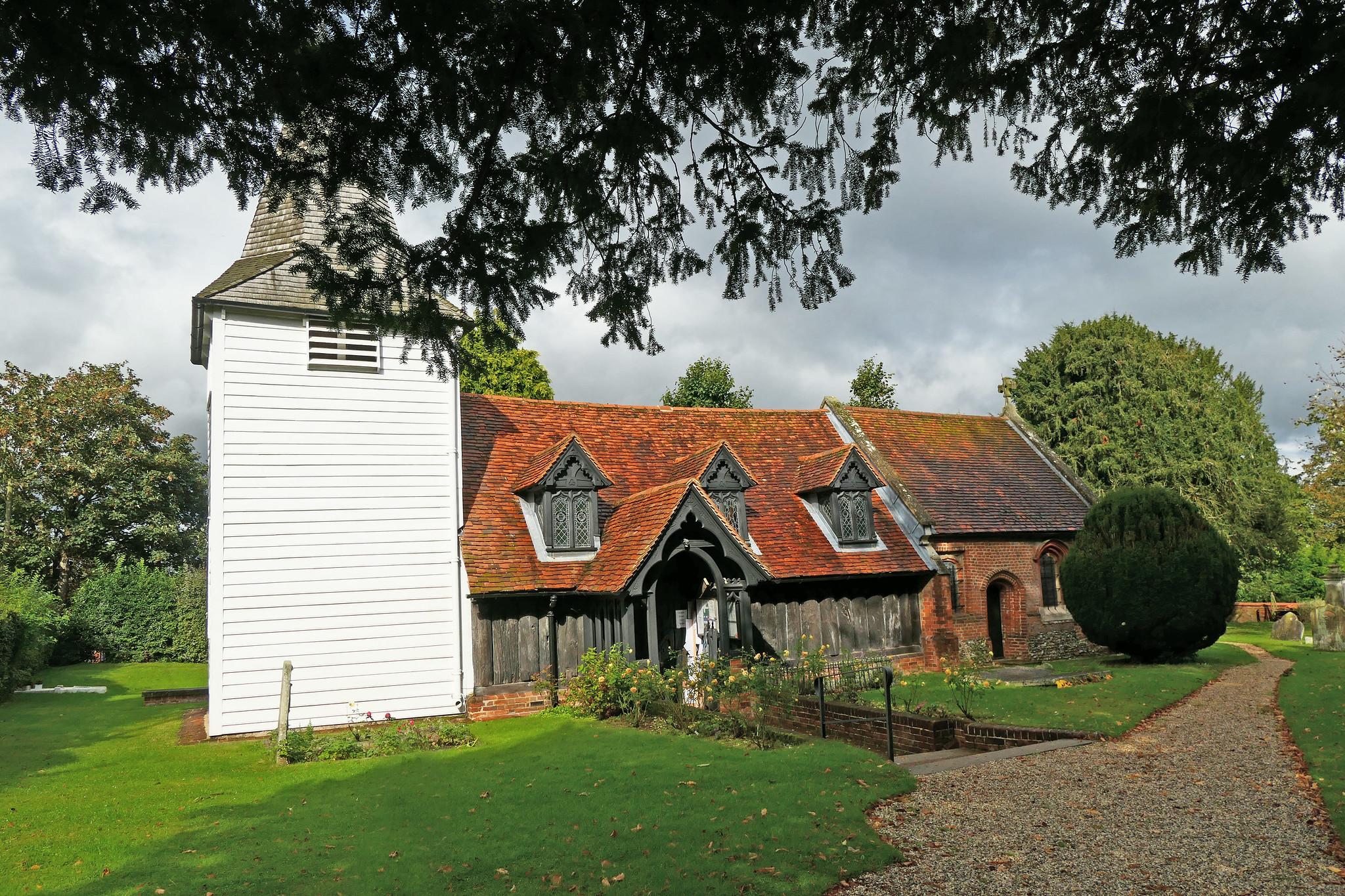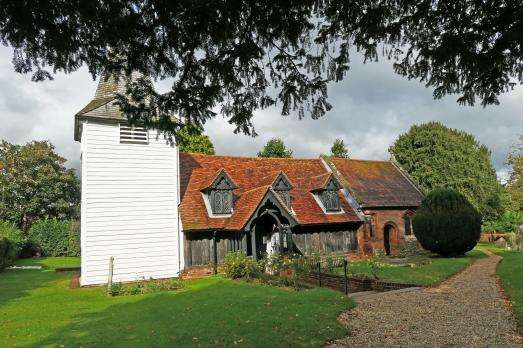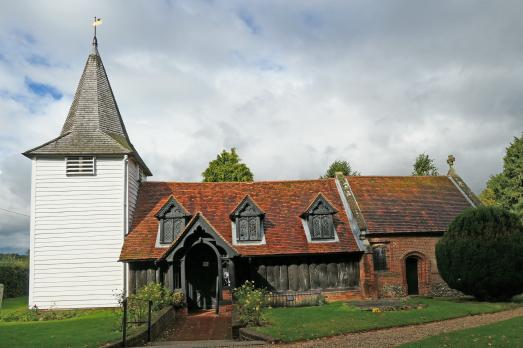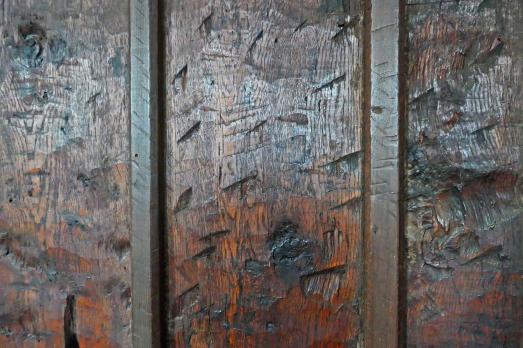The 51 timber planks you see here today date from about 1060, although excavations undertaken in the chancel in 1960 revealed the existence of two earlier timber structures dating from the 6th, and 7th centuries, around the time that St Cedd began his work of converting the Saxons to Christianity.
The church bears witness to the work of Saxon, Norman, Tudor and Victorian builders who variously extended, repaired and restored the building over the ages. In 1848/9 the church underwent severe restoration works, and in 1990 works were undertaken to stabilise the church as it stands today, whilst in 2005 the spire was completely reshingled in oak.
The body of Saint Edmund, King of East Anglia, and England’s first patron saint martyred in 869AD (the Normans replaced him later with St. George) rested in the church in 1013 on its way to Bury St. Edmunds in Suffolk.
The oldest grave, lying adjacent to the entrance to the church is that of a 12th century Crusader, thought to be a bowman. The churchyard contains the war graves of three soldiers of World War I and an airman of World War II.
The Tolpuddle Martyrs
The Tolpuddle Martyrs, a group of early 19th century trade union activists from Dorset who were deported to Australia for daring to band together to ask for a decent living wage.
In 1837 as a result of a public outcry against their harsh sentence of transportation to Australia, the now famous Dorset farmers were returned to England where they were given tenancies in Greensted and High Laver.
Several of the Martyr's worshipped at St Andrews, and in 1839 one of them James Brine married Elizabeth Standfield, the daughter of another of the martyrs at Greensted Church. The entry in the marriage register is still available for view in the church.




